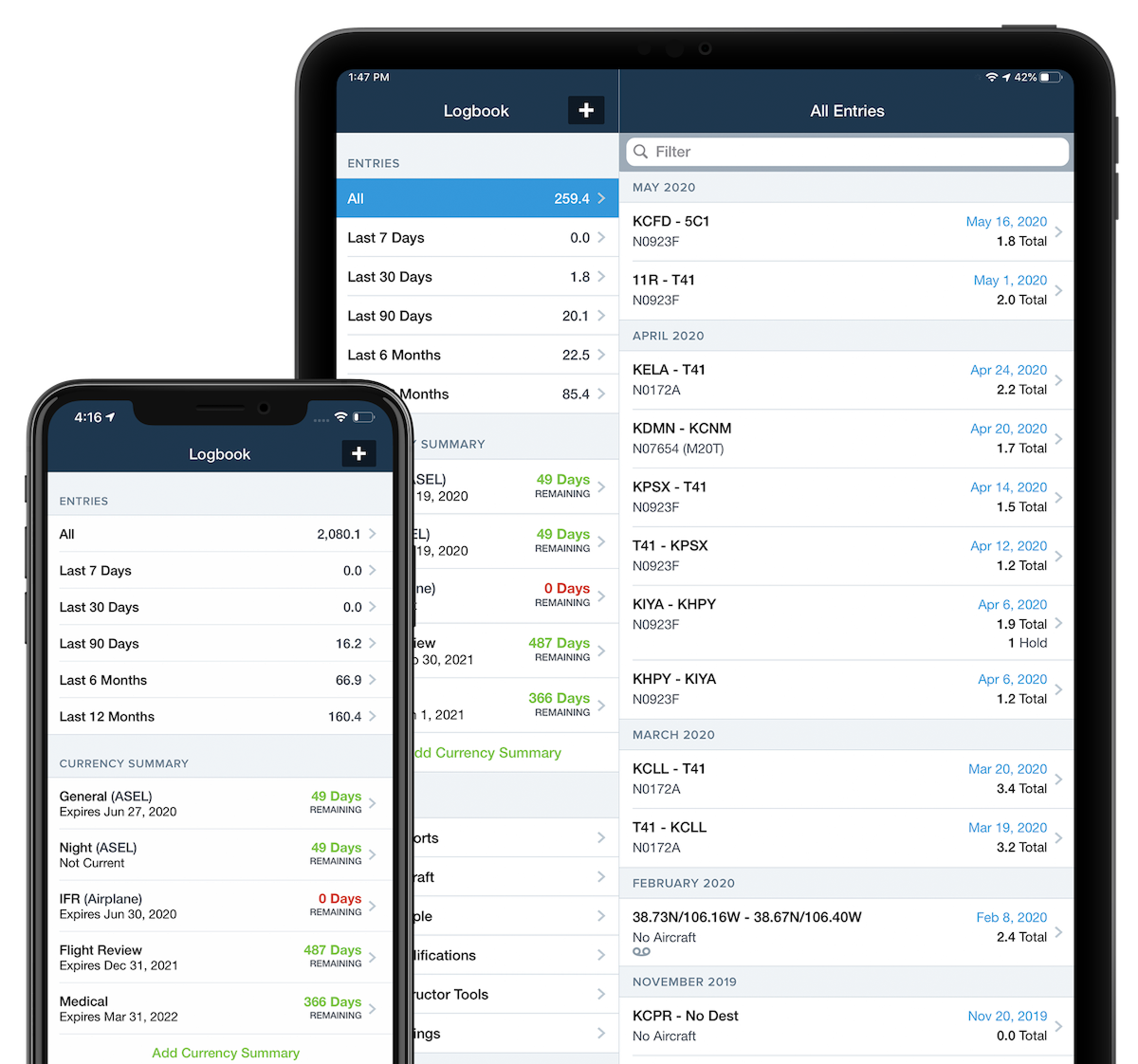ForeFlight Logbook
Digital logbook designed for pilots who trust their records
Project Context
ForeFlight was expanding beyond flight planning into more tools that supported pilots' daily operations. A digital logbook was a natural extension, but it had to earn pilots' trust as they were accustomed to paper logs for official records.
The challenge was to create a digital experience that felt as reliable as paper while adding smart digital conveniences.
My Role
Product Designer
Timeframe
2014-2015
Platform
iOS
Category
Aviation

My Contribution
I worked with engineers and product leads to design core flows for the logbook feature. My focus was on the iOS app experience — creating entry screens, interaction patterns, and layouts that made flight logging faster and less error-prone.
Smart Entry
Adaptive forms for VFR, IFR, PIC, and dual instruction
Endorsements
Secure on-device signatures for instructor approvals
At-a-Glance
Quick views of currency status and flight totals
Offline First
Reliable logging even without internet connection
Challenges & Solutions
Familiar Yet Better
Made digital input feel as intuitive as paper logs while adding smart defaults and validation
Contextual Fields
Showed only relevant fields based on flight type to prevent user overload
Always Available
Designed for reliability with offline-first functionality and sync when back online
Outcome & Impact
The Logbook feature provided a clean, digital alternative to paper. It simplified entry, kept totals and currency status current, and reduced the risk of missing endorsements. It became a trusted tool for both new and experienced pilots.
Key Achievements
- Reduced logbook entry time by 60% compared to paper
- Eliminated common calculation errors in flight time tracking
- Became an FAA-accepted method for logbook record keeping
Reflection
Looking back, this was one of my early experiences designing for a professional audience with strict requirements. It taught me the balance between respecting existing workflows (paper logs) and introducing digital conveniences (smart defaults, validation, reports).
The project reinforced the importance of understanding domain-specific needs and building trust through thoughtful, reliable design.